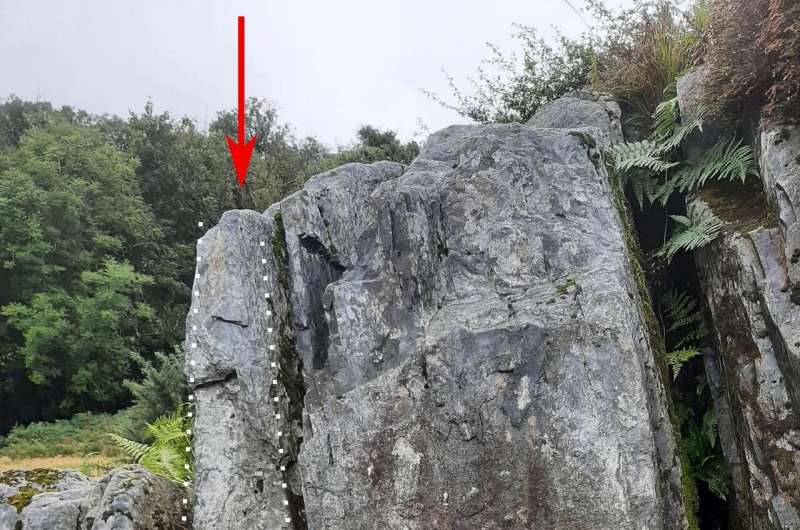Science
New Research Reveals Humans Transported Stonehenge Bluestones

New research led by Aberystwyth University has determined that the iconic bluestones of Stonehenge, specifically the Newall boulder, were transported by Neolithic people rather than by glacial movements. The findings, published on July 23, 2025, in the *Journal of Archaeological Science: Reports*, provide significant insight into the origins of these ancient stones, which were sourced from Craig Rhos-y-Felin in Wales, located over 200 kilometers away from the legendary monument on Salisbury Plain.
Stonehenge has long captivated visitors and scholars alike, not only for its towering standing stones but also for its smaller, blue-hued bluestones. Traditionally, archaeologists have debated whether these megaliths arrived at their current location through human effort or glacial transport. The Newall boulder has been a focal point in this discussion, as it is a discrete fragment with a well-documented excavation history and sampling record, making it ideal for analysis.
In their study titled “The enigmatic ‘Newall boulder’ excavated at Stonehenge in 1924: New data and correcting the record,” the research team conducted extensive mineralogical, petrographic, and geochemical analyses to trace the origin and transport history of the stone. The Newall boulder, measuring 22 × 15 × 10 cm, was discovered during an excavation led by Lt-Col Hawley in 1924 and later removed by R.S. Newall.
Previous analyses had taken place in the 1970s and 1980s, with samples archived in the British Geological Survey and Amgueddfa Cymru, Museum Wales. The recent research revealed that the boulder is a match for Rhyolite Group C from Craig Rhos-y-Felin. This connection is further supported by geochemical analysis and morphological comparisons, as the Newall boulder’s unique shape aligns with the tops of in situ rhyolite pillars at Craig Rhos-y-Felin. Notably, no signs of glacial striations were identified, suggesting that any surface damage resulted from natural weathering rather than glacial transport.
Field investigations along Salisbury Plain have not uncovered any glacial deposits or erratics, which are rocks transported by glaciers. The absence of such materials, particularly within a 4-kilometer radius of Stonehenge, further strengthens the argument for human involvement in transporting the bluestones. The angular fragments found near the monument exhibit edge damage indicative of purposeful shaping.
The research ultimately concludes that the Newall boulder originates from Craig Rhos-y-Felin and was likely broken off from a larger monolith, such as Stone 32d. All gathered data, including mineralogical, geochemical, and field evidence, points to the bluestones being transported to Stonehenge by Neolithic people, discrediting the glacial hypothesis.
This study not only clarifies the origins of the Newall boulder but also enhances the overall understanding of how the bluestones came to be part of Stonehenge, reaffirming the role of ancient human efforts in shaping this iconic site.

-

 Entertainment2 months ago
Entertainment2 months agoIconic 90s TV Show House Hits Market for £1.1 Million
-

 Lifestyle4 months ago
Lifestyle4 months agoMilk Bank Urges Mothers to Donate for Premature Babies’ Health
-

 Sports3 months ago
Sports3 months agoAlessia Russo Signs Long-Term Deal with Arsenal Ahead of WSL Season
-

 Lifestyle4 months ago
Lifestyle4 months agoShoppers Flock to Discounted Neck Pillow on Amazon for Travel Comfort
-

 Politics4 months ago
Politics4 months agoMuseums Body Critiques EHRC Proposals on Gender Facilities
-

 Business4 months ago
Business4 months agoTrump Visits Europe: Business, Politics, or Leisure?
-

 Lifestyle4 months ago
Lifestyle4 months agoJapanese Teen Sorato Shimizu Breaks U18 100m Record in 10 Seconds
-

 Politics4 months ago
Politics4 months agoCouple Shares Inspiring Love Story Defying Height Stereotypes
-

 World4 months ago
World4 months agoAnglian Water Raises Concerns Over Proposed AI Data Centre
-

 Sports4 months ago
Sports4 months agoBournemouth Dominates Everton with 3-0 Victory in Premier League Summer Series
-

 World4 months ago
World4 months agoWreckage of Missing Russian Passenger Plane Discovered in Flames
-

 Lifestyle4 months ago
Lifestyle4 months agoShoppers Rave About Roman’s £42 Midi Dress, Calling It ‘Elegant’








